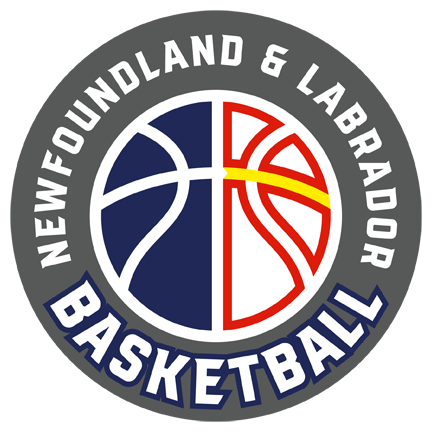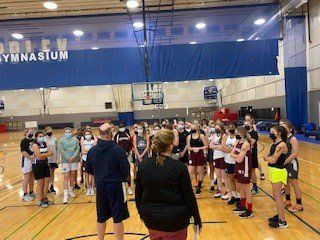Creating a Safe Sport Environment for all.
The goal of every organization is to provide a safe and inclusive environment to everyone who is involved in their programs. From the athletes, coaches, officials, and the spectators, the NLBA wants everyone to feel safe and supported in their endeavors. While every situation is different and every individual is different in how they perceive situations, it is important for the NLBA to provide resources and information to everyone to help give individuals the ability to foster athlete’s mental and physical wellbeing as well as provide those save environments to do that in.
The Coaching Association of Canada (2020) reflects this perspective in its definition of Safe Sport: “Our collective responsibility is to create, foster and preserve sport environments that ensure positive, healthy and fulfilling experiences for all individuals. A safe sport environment is one in which all sport stakeholders recognize, and report acts of maltreatment and prioritize the welfare, safety and rights of every person at all times.” When the priority is optimizing the sport environment, the prevention of maltreatment or harms becomes a natural by-product.
There are various forms of maltreatment in sport including but not limited to psychological, physical, sexual, neglect, grooming and failure to report maltreatment. Your child could be experiencing one or multiple forms of maltreatment. As parents and coaches, it is important to be able to recognize the signs that maltreatment may be happening. Some of these signs include but aren’t limited to a change in personality, your child not wanting to go to their sessions, any anxiety or anxiousness about participating that they didn’t have before. While these types of signs may be associated with other areas of an individual’s life, not necessarily maltreatment, it is a sign for you to start inquiring and digging deeper into what is happening in their lives.
Maltreatment doesn’t only happen by a coach or person in authority. It can happen in a peer-to-peer setting such as through bullying or harmful behaviors towards each other. Maltreatment also doesn’t only happen in the training facility; it can happen at events outside of the training sessions such as informal get togethers, or even through online social media. Ensure activities are done in groups with other people around. Canada Basketball and the NLBA have the rule of 2 in place with the goal of ensuring interactions and communications are open, observable, and justifiable. While it is geared towards coach athlete interactions it is recommended to be used in all situations where adult/child interactions are occurring.
Some red flags to watch for within a program would be things like: inappropriate private conversations through text messages or DM’s with the individual, verbal abuse from a person in authority such as a coach towards an athlete, the feeling of unrealistically high expectations followed by excessive punishment if not achieved. Other things to be aware of include when coaches are isolating the individual from the rest of the group, a coach failing to ensure safety of the individuals by using unsafe equipment or forcing participation when injured or unwell. While these signs are not exclusive and may be observed in other situations than maltreatment if you have a bad feeling about a situation or program it is worth looking into further.
Over the years education pieces have changed, there are many resources out there available to people to take that promote safe sporting environments as well as help educate individuals on how to recognize, prevent and address maltreatment in sport. Most recently the Coaches Association of Canada has come up with a free NCCP course called Safe Sport which can be taken by anyone and helps give individuals the tools needed to create a culture where everyone can thrive safely.
The NLBA has recently mandated that all its board members, staff, and coaches complete this Safe Sport course. And NABO has mandated that its officials have this course completed as well. We will also be requiring all provincial team athletes and parents complete this course in the future. It is a great resource to provide knowledge and tools in the hands of everyone to create safe sporting environments. In addition to this training the NLBA also requires that all of its coaches complete a vulnerable sector search with the RNC/RCMP and provide a clear record every year. Our coaches are also required to be NCCP certified which includes respect and ethics training as well.
There have been many stories coming to light of maltreatment of athletes in various sports, often these don’t come into light until many years after the events have occurred. It is important that we provide safe spaces to allow for individuals to feel protected, should they come forward. One additional resource the NLBA is introducing as of January 15, 2022, is an anonymous reporting portal on our website. Here you will be able to report incidents of suspected maltreatment to a committee which will investigate these reports. All reports will be kept on file to reference and be monitored for any patterns that may emerge. There will be an independent committee that will investigate and take action where needed from these reports in alignment with our Athlete Protection Guidelines.
It is everyone’s job to contribute to a safe sport environment. Parents, athletes, officials, coaches, board members all play a role in the recognition and prevention of maltreatment in the NLBA environment. Thank you for doing your part.
Links:
NLBA Safe Sport Information:
https://www.newfoundlandlabradorbasketball.com/safe-sport
NLBA Safe Sport Reporting Form:
Safe Sport Training:
https://safesport.coach.ca/participants-training
NLBA Athlete Protection Guidelines:
https://irp.cdn-website.com/08525354/files/uploaded/2021%20Athlete%20Protection%20Guidelines.pdf
Join Our Mailing List
Thank you for joining the NLBA Mailing List.
Stay tuned for some great content from the NLBA.
Oops, there was an error submitting your message.
Please try again later.

